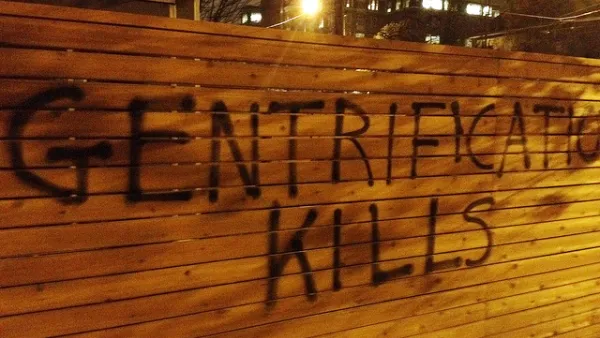In Canadian cities, rising income inequality has been reflected in neighborhood polarization. The experience of Hamilton, Ontario, has been typical. Here, inner-city decline is now giving way to gentrification, displacing poverty to the suburbs.
In general, from the 1960s onwards, Canadian cities have seen a growing polarization of incomes which has been reflected in a polarization of neighborhoods. Hamilton, Ontario, a mid-sized industrial centre 50 miles from Toronto, has been typical. In 1970, most neighborhoods were middle-income in character. Since then, a steadily growing proportion have become either poor or affluent.
The geographical pattern of change in Hamilton has been more typical of cities in the northeastern U.S. than in Canada. The decline of steel production and of other manufacturing hit the city hard. A sequence of maps shows that from 1970 through 2010, neighborhood polarization was expressed in a growing contrast between inner city and 'suburbs', although this term doesn't mean quite the same as in the United States because a provincially-mandated amalgamation in 2000 merged the City with all major suburban municipalities.
In the past decade, however, Hamilton's inner city has begun to turn around. Some neighbourhoods adjacent to the downtown have begun to revive. There is much talk, and growing evidence, of gentrification. To a large extent, this has been due to the prosperity and growth of Hamilton's neighbor, Toronto. Planners and politicians now talk of the 'GTHA' (Greater Toronto-Hamilton Area). Driven away by a property boom, an increasing number of Torontonians are relocating to Hamilton and reviving inner-city neighbourhoods there in a manner that began in Toronto almost half a century ago. In a unique context, another North American industrial centre is reviving, but displacing poverty to poorly-serviced inner suburbs.
A recent report, written by Richard Harris, Jim Dunn and Sarah Wakefield [pdf], has summarized these trends. The report is part of a series of reports on neighborhood change in Canadian cities that is being produced by the Neighbourhood Change Research Partnership at the University of Toronto. Over the years, changes in Hamilton have been well-covered by a local daily newspaper, the Hamilton Spectator. Very recently, the Spectator ran a series of articles on the geography of poverty in which they revisited and updated a series of articles published a decade ago. The final article in the series is available here.
FULL STORY: A City on the Cusp: Neighbourhood Change in Hamilton since 1970

National Parks Layoffs Will Cause Communities to Lose Billions
Thousands of essential park workers were laid off this week, just before the busy spring break season.

Retro-silient?: America’s First “Eco-burb,” The Woodlands Turns 50
A master-planned community north of Houston offers lessons on green infrastructure and resilient design, but falls short of its founder’s lofty affordability and walkability goals.

Delivering for America Plan Will Downgrade Mail Service in at Least 49.5 Percent of Zip Codes
Republican and Democrat lawmakers criticize the plan for its disproportionate negative impact on rural communities.

Test News Post 1
This is a summary

Test News Headline 46
Test for the image on the front page.

Balancing Bombs and Butterflies: How the National Guard Protects a Rare Species
The National Guard at Fort Indiantown Gap uses GIS technology and land management strategies to balance military training with conservation efforts, ensuring the survival of the rare eastern regal fritillary butterfly.
Urban Design for Planners 1: Software Tools
This six-course series explores essential urban design concepts using open source software and equips planners with the tools they need to participate fully in the urban design process.
Planning for Universal Design
Learn the tools for implementing Universal Design in planning regulations.
EMC Planning Group, Inc.
Planetizen
Planetizen
Mpact (formerly Rail~Volution)
Great Falls Development Authority, Inc.
HUDs Office of Policy Development and Research
NYU Wagner Graduate School of Public Service




























